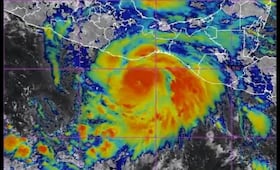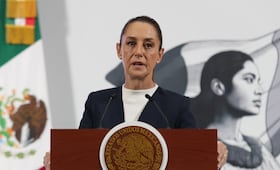
On September 6, 2006, five severed heads were left inside a club in Uruapan , in the state of Michoacán .
That day, around 20 armed men broke into a bar, shot, and threatened the dancers, staff, and clients. Then they emptied the plastic bags they were carrying and left 5 human heads on the dance floor.
The armed men left a message saying: “ The Family doesn't kill for money, doesn't kill women, doesn't kill innocents, those who have to die will die, everyone should know it, this is divine justice.”
Although this crime is often seen as the event that marked the beginning of a bloody era in Michoacán , this wasn't the first horrific crime in the region. Three days before, a woman was decapitated nearby. The victim was known as La Jefa, The Boss . She was a human trafficker and drug dealer. She was murdered , decapitated , and had a wound that spanned between her chest and stomach ; she was pregnant . Her body was abandoned in a bridge 110 kilometers away from the state capital.
According to investigations, the woman was murdered for distributing drugs outside her territory. La Jefa used taxi drivers and female and male sex workers to distribute the drugs and was cruelly murdered when she was caught.
The beginning
Local authorities
said that there is where it all began since La Jefa was in a relationship with Carlos Rosales Mendoza , known as " El Tísico ," a notorious criminal and drug trafficker .
La Familia Michoacana , the cartel founded by Rosales Mendoza , blamed two cartels for the murder of La Jefa : Milenio cartel , also known as Los Valencia cartel . That murder would mark the beginning of a cruel and violent war between the two criminal organizations in Michoacán .
A month before these murders , in August 2006 , at least 88 people were murdered in the state ; four were decapitated and other five were dismembered . The other 79 victims were shot and according to the state's Attorney General's Office , the homicides were linked to a feud between cartels .
Although violence and murders had increased in Michoacán since 2002 , Michoacán wasn't at the center of crimes until the five severed heads were left at the club; this event was a turning point in Mexico . That same day, the creation of the Familia Michoacana carte l was announced.
The t hen-Governor, Lázaro Cárdenas Batel, PRD , canceled his attendance to public events days later and no government officials made any statement in regards to the events taking place in Michoacán until the Interior Minister, Enrique Bautista Villegas , said that “the government and the institutions had been surpassed by violence .”
The official confirmed that events like this had never taken place in the state before and that the Governor had already requested help. This move confirmed that violence had taken over Michoacán long time ago, at a bigger scale, after the dispute between Valencia and Rosales , inside the Gulf cartel.
A love story
Inés Oseguera
, El Tísico 's first wife , fell in love with Valencia . This marked the beginning of a cruel war that has yet to end.
Carlos Rosales
, with the support of Osiel Cárdenas , started a bloody fight to kill his former business partner, Armando Valencia.
Armando Valencia
and his family fled Michoacán ; he was supported and protected by the Sinaloa cartel, and still is, and then created the Guadalajara cartel , which then became the Jalisco Nueva Generación cartel.
After La Familia Michoacana split, it paved the way for the creation of Los Caballeros Templarios, Knights Templar , led by Nazario Moreno González , “ El Chayo ” but the criminal group was defeated by vigilante groups in 2013.
Then violence returned when Los Viagra founded their own cartel and fought to control Ur u apan. The rivalry between these cartels and the Jalisco Nueva Generación cartel started in the border between Michoacán and Jalisco . The feud then expanded to Uruapan and the Tierra Caliente region , where they were disputing the territory, leaving dozens of dead people behind. As a result of this criminal antagonism, violence increased and worsened in the last two years. Armed attacks and homicides have become more constant throughout the state.
Since May 19, the war between the Jalisco Nueva Generación cartel and Los Viagras left 11 gunmen dead and two wounded and Uruapan has been besieged by crime and violence .
On August 8, 19 bodies were paraded throughout Uruapan . Some of the victims were dismembered , others were decapitated , and others were hung in bridges.
On July 25, an armed group broke into a funeral home in Uruapan and shot the attendees, killing 8 and wounding a dozen people.
It seems like violence in Michoacán is a never-ending story .

25 dead after criminals attack bar in Coatzacoalcos, Mexico
gm
Más información

Estados
Huracán Erick alcanza categoría 2; prevén vientos muy fuertes e inundaciones en el sur de México

Mundo
EU sanciona por terrorismo a "El Mencho"; también castiga al supuesto asesino de la influencer Valeria Márquez

Nación
Sheinbaum: Planteé a Trump un “acuerdo general”; menciona la importancia de reconocer a los mexicanos en EU

